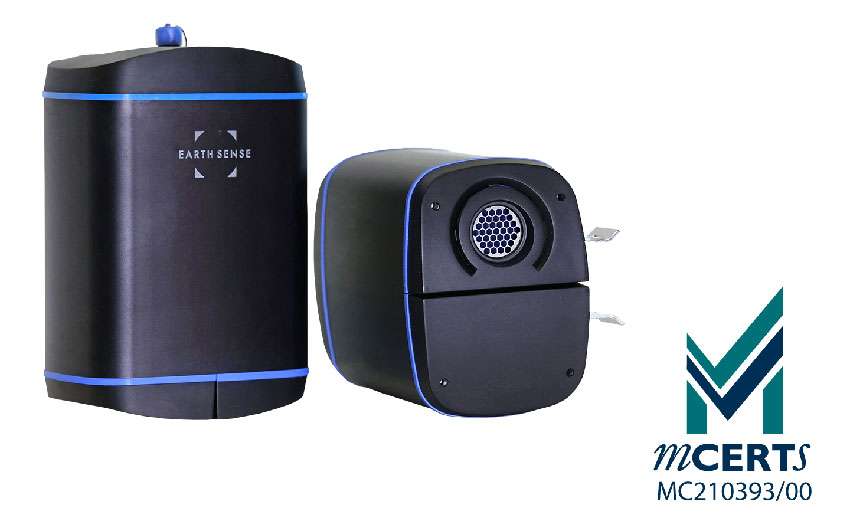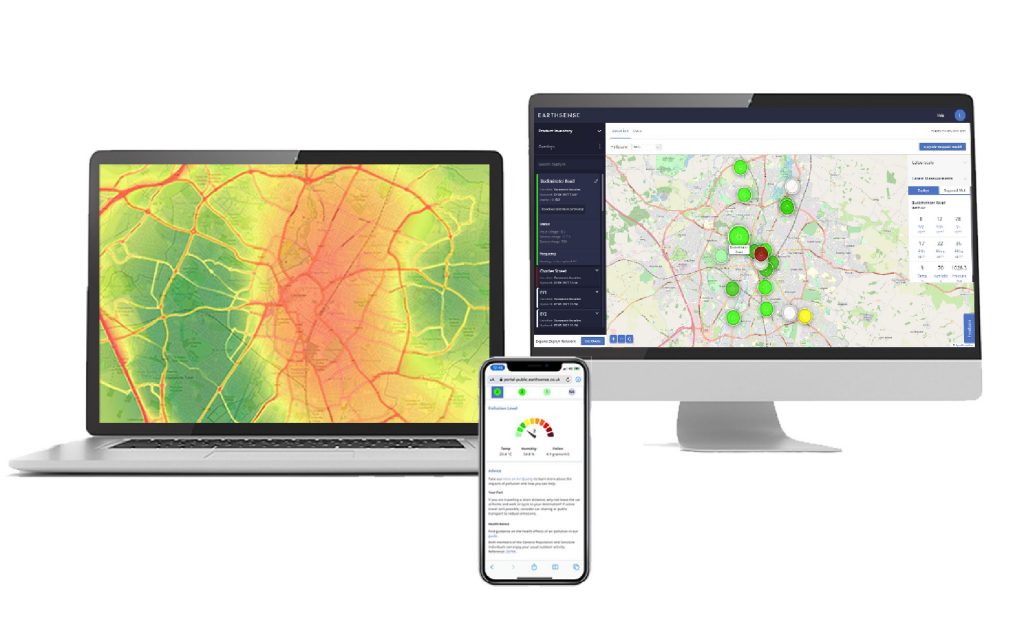Born out of the University of Leicester, EarthSense has over 15 years of air quality expertise. With a rich academic heritage, this places them at the cutting edge of product innovations in air quality monitoring and modelling across the globe. The company’s award-winning technology and software solutions enable individuals to manage environmental challenges by analysing air quality data and using these insights to reduce the impact of harmful pollutants for the betterment of human health.
Interview with Greg Lewis, CSMO at EarthSense.
Easy Engineering: What are the main areas of activity of the company?
Greg Lewis: Air pollution has a detrimental effect on the environment and health. The World Health Organisation (WHO) estimates that around 90% of people worldwide breathe polluted air, which can result in a range of health impacts including strokes, heart diseases, lung cancer, acute and chronic respiratory diseases. This is why we are introducing disruptive technologies to accelerate sustainable urbanisation.
Our solutions enable companies to monitor and understand how air pollution flows and disperses in near real-time, allowing them to identify how different sources can impact on the local and wider environment. Used across a range of sectors including smart city infrastructure, intelligent transport systems, construction, we are helping to provide a picture of air pollution at a level of detail not seen before, thus enabling change and a better evidence base for decarbonisation activities.
E.E: What’s the news about new products?
G.L: Our Zephyr® air quality monitor has just been awarded indicative MCERTS, an internationally recognised standard regarding ambient air monitoring for indicative ambient particulate monitors. EarthSense is one of the only companies in the world to have met this standard that gives customers various benefits, such as data complying with permit requirements for dust monitoring and construction activities, promoting public confidence in monitoring data, and confidence in using it as part of air quality management software. Not only this, but iMCERTS provides a framework for customers to choose monitoring equipment that meets the Environment Agency’s specifications.

We’ve also launched Virtual Zephyrs, a cost-effective, flexible solution with accuracy that is comparable to indicative continuous monitoring technology. Virtual Zephyrs use modelled points from our MappAir® model through the MyAir® web application to allow users to visualise air quality information in places that physical hardware does not exist. By selecting an area of interest, Virtual Zephyrs fill the gaps in locations where hardware isn’t or can’t be deployed.
We have also integrated the latest National Atmosphere Emission Inventory (NAEI) data layers into our MappAir® air quality model to provide insights into sources of air pollution. These include agriculture, energy production, transport, waste treatment and more, enabling users to view top emitters and identify methods of reducing emissions directly at the source.
E.E: What are the ranges of products?
G.L: The Zephyr® is an award-winning, indicative, certified air quality monitor that allows users to monitor a range of pollutants, including NO, NO2, O3, CO, SO2, H2S, CO2, TVOC, PM1, PM2.5 and PM10. With a selection of power options including mains, battery or solar power, the Zephyr® collects air quality measurements in real-time, giving visibility of air quality concentrations at its location.
Our near real-time MappAir® model provides high-resolution visualisations of air quality. It uses advanced modelling techniques and cloud-based data inputs including transport and weather data and applies machine learning technologies to create usable insights of air pollution around the world. MappAir® allows users to identify key emission sources within an area of interest, complete with historic and predictive air quality data providing detailed and actionable insight into pollution trends.
The MyAir® web application lets users view, analyse and download all of this powerful data, which they can also provide to members of the public through a bespoke public portal. It allows users to make informed decisions based on accurate, high-resolution data and has a host of features such as source apportionment, 3-day pollution forecasting, alerting, Air Quality Management Area (AQMA) overlays and UK-wide MappAir® data for added context to localised air quality measurements.
E.E: At what stage is the market where you are currently active?
G.L: Already a well-established SME in the environmental and air quality services domain, we are committed to accelerating sustainable urbanisation and continuing ground-breaking innovation in air quality monitoring.

We are expanding our customer base in the UK, EMEA, US and APAC markets, and expanding our partner network to enable our products to be more accessible across the globe. We have a page on our website where you can contact us if you are interested in a potential partnership.
Alongside our market activity, we are continuously investing in product development. For our software platform MyAir®, we are striving to provide more tools and improve usability for smarter insights into environmental and air quality data. Across all our products we are continuously streamlining and improving our offering, ensuring that our solutions provide the most accurate data that complies with industry standards and that we are led by our client’s needs.
E.E: What can you tell us about market trends?
G.L: Pressure for government agencies to monitor and control pollution is increasing as a result of international rules and regulations. There is more of a focus on the management of critical environmental issues in emerging economies as modernization, construction, and development increase. What’s more, certification and approval processes are becoming more common for small-form technologies.
E.E: What are the most innovative products marketed?
G.L: The flexibility of our data solutions means there are many innovative uses of our technology. Two projects we are excited about are Southampton City Council and Lancaster City Council.
We are currently working with Southampton City Council, which is using our air quality data services to visualise and mitigate woodburning smoke emissions. The council has launched a campaign with the Environment Centre (tEC) in order to encourage behavioural change and reduce wood-burning emissions. This is being done through 18 Zephyr® monitors which have been installed around residential areas and neighbouring local authority areas, MappAir® data to model woodburning emissions, and a public portal to make the data accessible by the community.
Funded by the 2021 DEFRA Air Quality Grant, we are also working with Lancaster City Council (LCC) to run a three-year air quality project to improve public awareness of air quality, reduce particulate matter concentrations and minimise personal exposure across the district. 14 Zephyr® monitors are being installed to measure concentrations of key pollutants, focussing on PM2.5 and PM10, and this data will be accessible by members of the public with a public portal.

E.E: What estimations do you have for 2023?
G.L: I expect there to be an increase in demand for environmental technologies with the ongoing development of smart cities and IoT as well as aligning the ambient air quality agenda with wider environmental challenges around decarbonisation and Net Zero. More than ever, people are using data to solve challenges with insights previously unknown. In addition, with the increase in global environmental regulations, research into air quality and public awareness, we can expect to see a shift towards environmental technology being embedded into planning and strategies.
